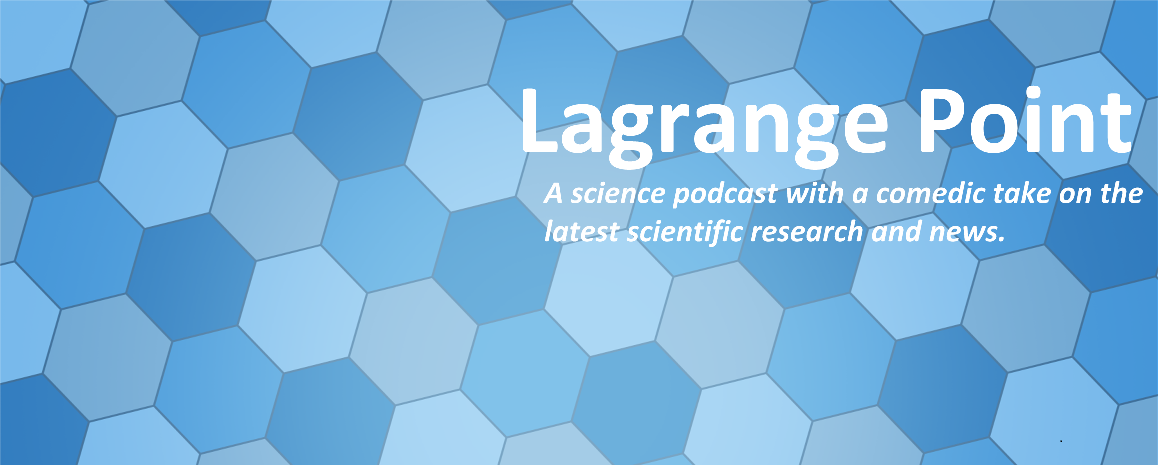Episodes

Monday Jul 27, 2020
Episode 389 - Chronic Pain, Ears, Long lasting Electrodes
Monday Jul 27, 2020
Monday Jul 27, 2020
Treating chronic pain through tiny electrodes in your ear. Can 3 phase like stimulating of nerves in your eye help treat chronic pain? Mapping out the inside of the ear in incredibly fine detail can help treat chronic pain. Fine tuning tiny electrodes inside the ear can help relieve chronic pain. Using a printer, tattoo paper and polymers to make long lasting electrodes. Flexible, thin and long lasting electrodes can make it easier to study the brain and the heart. Studying the brain over the long term just got easier with tattoo paper based electrodes.
- Babak Dabiri, Stefan Kampusch, Stefan H. Geyer, Van Hoang Le, Wolfgang J. Weninger, Jozsef Constantin Széles, Eugenijus Kaniusas. High-Resolution Episcopic Imaging for Visualization of Dermal Arteries and Nerves of the Auricular Cymba Conchae in Humans. Frontiers in Neuroanatomy, 2020; 14 DOI: 10.3389/fnana.2020.00022
- Laura M. Ferrari, Usein Ismailov, Jean-Michel Badier, Francesco Greco, Esma Ismailova. Conducting polymer tattoo electrodes in clinical electro- and magneto-encephalography. npj Flexible Electronics, 2020; 4 (1) DOI: 10.1038/s41528-020-0067-z

Monday Jun 08, 2020
Episode 382 - Animals keeping watch on our environment
Monday Jun 08, 2020
Monday Jun 08, 2020
Animals can help us monitor our environment for pollution. From silicon dog tags to tiger snakes in wetlands, animals can help us monitor pollution. How can silicon dog tags help protect humans from environmental pollutants? Cleaning up an oil spill is tricky, but with the right materials it's easy as wringing a sponge. Water hating but Oil loving magnetic sponges can help clean up after oil spills. How do Tiger snakes help us find the cleanest wetlands? Just how clean are urban wetlands?
- Catherine F. Wise, Stephanie C. Hammel, Nicholas Herkert, Jun Ma, Alison Motsinger-Reif, Heather M. Stapleton, Matthew Breen. Comparative Exposure Assessment Using Silicone Passive Samplers Indicates That Domestic Dogs Are Sentinels To Support Human Health Research. Environmental Science & Technology, 2020; DOI: 10.1021/acs.est.9b06605
- D. C. Lettoof, P. W. Bateman, F. Aubret, M. M. Gagnon. The Broad-Scale Analysis of Metals, Trace Elements, Organochlorine Pesticides and Polycyclic Aromatic Hydrocarbons in Wetlands Along an Urban Gradient, and the Use of a High Trophic Snake as a Bioindicator. Archives of Environmental Contamination and Toxicology, 2020; 78 (4): 631 DOI: 10.1007/s00244-020-00724-z
- Vikas Nandwana, Stephanie M. Ribet, Roberto D. Reis, Yuyao Kuang, Yash More, Vinayak P. Dravid. OHM Sponge: A Versatile, Efficient, and Ecofriendly Environmental Remediation Platform. Industrial & Engineering Chemistry Research, 2020; DOI: 10.1021/acs.iecr.0c01493

Monday Jun 01, 2020
Monday Jun 01, 2020
Finding it hard to wake up in the morning when it's cold? Don't worry you're not alone. What can we Fruit Flies teach us about wanting to stay in bed especially when it's cold outside? How do the cycles of temperature and light impact sleep? Is the right temperature key to a good night's rest? Is the optimum temperature hard coded in creatures brain or is it all relative? Getting a good night's sleep is important for keeping your brain healthy. What can zebrafish and fruit flies help us understand about getting a good night's sleep? Is there a connection between a good night's sleep and cleaning out unwanted proteins in your brain?
- Michael H. Alpert, Dominic D. Frank, Evan Kaspi, Matthieu Flourakis, Emanuela E. Zaharieva, Ravi Allada, Alessia Para, Marco Gallio. A Circuit Encoding Absolute Cold Temperature in Drosophila. Current Biology, 2020; DOI: 10.1016/j.cub.2020.04.038
- Sarah Ly, Daniel A. Lee, Ewa Strus, David A. Prober, Nirinjini Naidoo. Evolutionarily Conserved Regulation of Sleep by the Protein Translational Regulator PERK. Current Biology, 2020; DOI: 10.1016/j.cub.2020.02.030

Monday Apr 27, 2020
Episode 376 - Learning from spider webs, venom and combs
Monday Apr 27, 2020
Monday Apr 27, 2020
What can we learn from spiders webs, venom and combs? How do spiders manage to weave intricate webs without getting tangled in them? How can spider's legs help develop next generation nano materials? How can spider venom help us fight back against the opioid crisis? Spider venom is dangerous but it can also help reduce harm in pain management.
- Akello J. Agwa, Poanna Tran, Alexander Mueller, Hue N. T. Tran, Jennifer R. Deuis, Mathilde R. Israel, Kirsten L. McMahon, David J. Craik, Irina Vetter, Christina I. Schroeder. Manipulation of a spider peptide toxin alters its affinity for lipid bilayers and potency and selectivity for voltage-gated sodium channel subtype 1.7. Journal of Biological Chemistry, 2020; 295 (15): 5067 DOI: 10.1074/jbc.RA119.012281
- Anna-Christin Joel, Marco Meyer, Johannes Heitz, Alexander Heiss, Daesung Park, Hana Adamova, Werner Baumgartner. Biomimetic Combs as Antiadhesive Tools to Manipulate Nanofibers. ACS Applied Nano Materials, 2020; 3 (4): 3395 DOI: 10.1021/acsanm.0c00130
- Po Peng, Devi Stuart‐Fox, Szu‐Wei Chen, Eunice J. Tan, Guan‐Lin Kuo, Sean J. Blamires, I‐Min Tso, Mark A. Elgar. High contrast yellow mosaic patterns are prey attractants for orb‐weaving spiders. Functional Ecology, 2020; DOI: 10.1111/1365-2435.13532

Monday Apr 13, 2020
Episode 374 - Lasers, Metal and Insect wings vs Bacteria
Monday Apr 13, 2020
Monday Apr 13, 2020
Taking the fight to bacteria with lasers, metal and insect wings. How can lasers help make a material into a bacteria destroyer? Metal in fantasy has demon slaying properties, but how can it help fight bacteria? What can we learn from insect wings to help make safer implants? What is it about silver that makes it good for killing bacteria (and werewolves). Why are metals so dangerous for bacteria? How can we treat and use metal to make medical devices safer from bacteria?
- Vidhya Selvamani, Amin Zareei, Ahmed Elkashif, Murali Kannan Maruthamuthu, Shirisha Chittiboyina, Davide Delisi, Zheng Li, Lirong Cai, Vilas G. Pol, Mohamed N. Seleem, Rahim Rahimi. Hierarchical Micro/Mesoporous Copper Structure with Enhanced Antimicrobial Property via Laser Surface Texturing. Advanced Materials Interfaces, 2020; 1901890 DOI: 10.1002/admi.201901890
- Asmaa A. Sadoon, Prabhat Khadka, Jack Freeland, Ravi Kumar Gundampati, Ryan H. Manso, Mason Ruiz, Venkata R. Krishnamurthi, Suresh Kumar Thallapuranam, Jingyi Chen, Yong Wang. Silver Ions Caused Faster Diffusive Dynamics of Histone-Like Nucleoid-Structuring Proteins in Live Bacteria. Applied and Environmental Microbiology, 2020; 86 (6) DOI: 10.1128/AEM.02479-19
- J. Jenkins, J. Mantell, C. Neal, A. Gholinia, P. Verkade, A. H. Nobbs, B. Su. Antibacterial effects of nanopillar surfaces are mediated by cell impedance, penetration and induction of oxidative stress. Nature Communications, 2020; 11 (1) DOI: 10.1038/s41467-020-15471-x

Monday Mar 02, 2020
Episode 368 - Brain injuries, epilepsy and treatment options
Monday Mar 02, 2020
Monday Mar 02, 2020
How can we give better quality of life for those suffering from neurological conditions? Getting a concussion is bad enough, but why do people often develop epilepsy afterwards? What is the link between concussions and epilepsy? How can we effectively reduce the risk of epilepsy after a concussion? For certain epilepsy conditions in children, CBD can help reduce seizure risk, but what type is best? Is pharmaceutical or artisan CBD for children with epilepsy?
- Akshata A. Korgaonkar, Ying Li, Dipika Sekhar, Deepak Subramanian, Jenieve Guevarra, Bogumila Swietek, Alexandra Pallottie, Sukwinder Singh, Kruthi Kella, Stella Elkabes, Vijayalakshmi Santhakumar. Toll‐like Receptor 4 Signaling in Neurons Enhances Calcium‐Permeable α‐Amino‐3‐Hydroxy‐5‐Methyl‐4‐Isoxazolepropionic Acid Receptor Currents and Drives Post‐Traumatic Epileptogenesis. Annals of Neurology, 2020; DOI: 10.1002/ana.25698
- American Academy of Neurology. (2020, February 27). Artisanal CBD not as effective as pharmaceutical CBD for reducing seizures. ScienceDaily. Retrieved February 29, 2020 from www.sciencedaily.com/releases/2020/02/200227160545.htm

Monday Feb 03, 2020
Episode 364 - Coronavirus from SARS to MERs and nConv2019
Monday Feb 03, 2020
Monday Feb 03, 2020
The Coronavirus family is a dangerous lot from SARS to MERS and Novel Coronavirus 2019. This week we look at the history of Coronavirus outbreaks, research into past infections and public health strategy. We do some fact checking on Coronavirus myths and fears. What lessons were learnt from the SARS outbreak of '03 that can help today in '20? How can turning off the cells recycling plant stop Coronaviruses in their tracks? What role does cell autophagy play in spreading or stopping MERS? What can we learn from the sequenced genomes of coronaviruses? How can tracking the ACE2 gene help people monitor the mutation of the coronavirus strains?
- Lewis, D. (2020). Coronavirus outbreak: what’s next? Nature. doi: 10.1038/d41586-020-00236-9
- Hollingsworth, J. (2020, January 30). The memory of SARS looms over the Wuhan virus. Here's how the outbreaks compare. Retrieved from https://edition.cnn.com/2020/01/29/china/sars-wuhan-virus-explainer-intl-hnk-scli/index.html
- Alerts - Novel coronavirus - Frequently asked questions. (n.d.). Retrieved from https://www.health.nsw.gov.au/Infectious/alerts/Pages/coronavirus-faqs.aspx#1-1
- Coronavirus latest: WHO declares global emergency. (2020, January 30). Retrieved from https://www.nature.com/articles/d41586-020-00154-w
- Yushun Wan, Jian Shang, Rachel Graham, Ralph S. Baric, Fang Li. Receptor recognition by novel coronavirus from Wuhan: An analysis based on decade-long structural studies of SARS. Journal of Virology, 2020; DOI: 10.1128/JVI.00127-20
- Nils C. Gassen, Daniela Niemeyer, Doreen Muth, Victor M. Corman, Silvia Martinelli, Alwine Gassen, Kathrin Hafner, Jan Papies, Kirstin Mösbauer, Andreas Zellner, Anthony S. Zannas, Alexander Herrmann, Florian Holsboer, Ruth Brack-Werner, Michael Boshart, Bertram Müller-Myhsok, Christian Drosten, Marcel A. Müller, Theo Rein. SKP2 attenuates autophagy through Beclin1-ubiquitination and its inhibition reduces MERS-Coronavirus infection. Nature Communications, 2019; 10 (1) DOI: 10.1038/s41467-019-13659-4

Monday Jan 20, 2020
Episode 362 - Life after a disaster from Fukashima to Chernobyl
Monday Jan 20, 2020
Monday Jan 20, 2020
What happens next after disaster strikes and people flee for safety? How do wildlife move in when people move out of a disaster zone? How do animals moving into an evacuated area change with no humans around? What is the most effective thing to do if you live near a disaster area? How do we assess risk and life expectancy impact of living near a disaster zone? Is it more dangerous to live near a nuclear plant or in the diesel smog of the big city?
- Phillip C Lyons, Kei Okuda, Matthew T Hamilton, Thomas G Hinton, James C Beasley. Rewilding of Fukushima's human evacuation zone. Frontiers in Ecology and the Environment, 2020; DOI: 10.1002/fee.2149
- Philip Thomas, John May. Coping after a big nuclear accident. Process Safety and Environmental Protection, 2017; 112: 1 DOI: 10.1016/j.psep.2017.09.013

Monday Jan 06, 2020
Episode 360 - Imaging hard-working Cells keeping you alive during illness
Monday Jan 06, 2020
Monday Jan 06, 2020
How do we peer into the inner workings of our cells, especially during their response to a medical emergency? What role does fibroblasts play to protect your heart after a heart attack? When is your body hardest at work repairing damage after a heart attack? What stem cells control your blood cells? How can we get a picture of the complex 3D shape of blood stem cells in your bone marrow? What role does bone marrow play in blood regulation?
References:
- Chiara Baccin, Jude Al-Sabah, Lars Velten, Patrick M. Helbling, Florian Grünschläger, Pablo Hernández-Malmierca, César Nombela-Arrieta, Lars M. Steinmetz, Andreas Trumpp, Simon Haas. Combined single-cell and spatial transcriptomics reveal the molecular, cellular and spatial bone marrow niche organization. Nature Cell Biology, 2019; DOI: 10.1038/s41556-019-0439-6
- Zohreh Varasteh, Sarajo Mohanta, Stephanie Robu, Miriam Braeuer, Yuanfang Li, Negar Omidvari, Geoffrey Topping, Ting Sun, Stephan G. Nekolla, Antonia Richter, Christian Weber, Andreas Habenicht, Uwe A. Haberkorn, Wolfgang A. Weber. Molecular Imaging of Fibroblast Activity After Myocardial Infarction Using a 68Ga-Labeled Fibroblast Activation Protein Inhibitor, FAPI-04. Journal of Nuclear Medicine, 2019; 60 (12): 1743 DOI: 10.2967/jnumed.119.226993

Monday Dec 09, 2019
Episode 356 - Responding to signs of danger
Monday Dec 09, 2019
Monday Dec 09, 2019
How do animals communicate information about danger? When a threat is detected by one animal, how do they pass it along to others? Does empathy play a role in how a create responds to a threat? Does the reaction of others around you change your response to threats? What chemical causes you to freeze in response to danger? How does serotonin cause deer in the headlights moments? What's the link between serotonin and slowing down in response to danger?
- Yingying Han, Rune Bruls, Efe Soyman, Rajat Mani Thomas, Vasiliki Pentaraki, Naomi Jelinek, Mirjam Heinemans, Iege Bassez, Sam Verschooren, Illanah Pruis, Thijs Van Lierde, Nathaly Carrillo, Valeria Gazzola, Maria Carrillo, Christian Keysers. Bidirectional cingulate-dependent danger information transfer across rats. PLOS Biology, 2019; 17 (12): e3000524 DOI: 10.1371/journal.pbio.3000524
- Clare E. Howard, Chin-Lin Chen, Tanya Tabachnik, Rick Hormigo, Pavan Ramdya, Richard S. Mann. Serotonergic Modulation of Walking in Drosophila. Current Biology, 2019; DOI: 10.1016/j.cub.2019.10.042
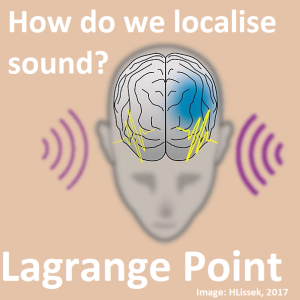
Monday Nov 11, 2019
Episode 352 - Figuring out where sound comes from and perceiving pitch
Monday Nov 11, 2019
Monday Nov 11, 2019
This week we look at the way our brains process sound, music, pitch and rhythm. How does our brain figure out where a sound is coming from? Do our eyes and ears process distance and location in a similar way? How does our brain discern differences in stimuli? What can we learn about pitch and rhythm from studying a remote Bolivian tribe? Is there a biological limit to our perception of sounds? Is our ability to perceive rhythm, chords and pitch cultural or biological?
References:
- Antje Ihlefeld, Nima Alamatsaz, Robert M Shapley. Population rate-coding predicts correctly that human sound localization depends on sound intensity. eLife, 2019; 8 DOI: 10.7554/eLife.47027
- Nori Jacoby, Eduardo A. Undurraga, Malinda J. McPherson, Joaquín Valdés, Tomás Ossandón, Josh H. McDermott. Universal and Non-universal Features of Musical Pitch Perception Revealed by Singing. Current Biology, 2019; DOI: 10.1016/j.cub.2019.08.020
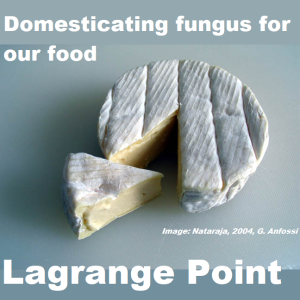
Monday Oct 21, 2019
Episode 349 - Domesticating fungus for our food
Monday Oct 21, 2019
Monday Oct 21, 2019
Humans have been using micro-organisms like fungus and bacteria to help improve our food for millennia. Can we tame new wild species of fungus to help create new types of our favourite foods like cheese? Penicillin is mostly known for antibiotics but it also helps give Camembert its particular taste. What causes cheese to rapidly tame wild strains of fungus? We are not the only ones who use microbes to help our food. Ants help stop disease from destroying plants by spreading their own antibiotics. Ant base antibiotics help stop plant pathogens. Sometimes bacteria don't fight against each other but rather team up and work together. Survival of kindest rules for bacteria, which helps different strains work together to survive.
References:
- Bodinaku, I., Shaffer, J., Connors, A. B., Steenwyk, J. L., Biango-Daniels, M. N., Kastman, E. K., … Wolfe, B. E. (2019). Rapid Phenotypic and Metabolomic Domestication of Wild Penicillium Molds on Cheese. MBio, 10(5). doi: 10.1128/mbio.02445-19
- Joachim Offenberg, Christian Damgaard. Ants suppressing plant pathogens: a review. Oikos, 2019; DOI: 10.1111/oik.06744
- Wenzheng Liu, Samuel Jacquiod, Asker Brejnrod, Jakob Russel, Mette Burmølle, Søren J. Sørensen. Deciphering links between bacterial interactions and spatial organization in multispecies biofilms. The ISME Journal, 2019; DOI: 10.1038/s41396-019-0494-9

Monday Sep 30, 2019
Monday Sep 30, 2019
Washing machines can save a lot of time and help clean up mess, but they can also harm our health and environment. Which washing process is better for the environment - full an fast or empty and delicate? How do washing machines help fill our oceans with microplastics? What can be done to help stop washing machines contributing to the microplastics in our waterways? Which washing setting is best for your health? Cold and clean or warm and soapy? How did a normal washing machine cause havoc in a hospital? How can you multi-drug resistant pathogens spread through a washing machine?
References:
- American Society for Microbiology. (2019, September 27). Your energy-efficient washing machine could be harboring pathogens: Lower temperatures used in 'energy saver' washing machines may not be killing all pathogens. ScienceDaily. Retrieved September 29, 2019 from www.sciencedaily.com/releases/2019/09/190927135202.htm
- Max R. Kelly, Neil J. Lant, Martyn Kurr, J. Grant Burgess. Importance of Water-Volume on the Release of Microplastic Fibers from Laundry. Environmental Science & Technology, 2019; DOI: 10.1021/acs.est.9b03022

Monday Sep 23, 2019
Monday Sep 23, 2019
Is it possible to stop Alzheimer's in it's tracks? How does the formation of plaques on your brain cells lead to Alzheimer's. Does the your brain immune cells fighting back against plaques lead to Alzheimers? Amino acids in the brain tying themselves into knots, can lead to super strong sealed zippers forming which dry out proteins, damage neurons and eventually can lead to diseases like Alzheimer's. An enzyme missing a repair or two over 60 years can lead to build up of kinked amino acids chains which can lead to neuron-degenerative diseases. What causes a cell to eat itself? Well its actually a pretty healthy thing to do. If a brain cell doesn't eat itself at the right time, well it can lead to a whole bunch of diseases.
- Rebeccah A. Warmack, David R. Boyer, Chih-Te Zee, Logan S. Richards, Michael R. Sawaya, Duilio Cascio, Tamir Gonen, David S. Eisenberg, Steven G. Clarke. Structure of amyloid-β (20-34) with Alzheimer’s-associated isomerization at Asp23 reveals a distinct protofilament interface. Nature Communications, 2019; 10 (1) DOI: 10.1038/s41467-019-11183-z
- Elizabeth Spangenberg, Paul L. Severson, Lindsay A. Hohsfield, Joshua Crapser, Jiazhong Zhang, Elizabeth A. Burton, Ying Zhang, Wayne Spevak, Jack Lin, Nicole Y. Phan, Gaston Habets, Andrey Rymar, Garson Tsang, Jason Walters, Marika Nespi, Parmveer Singh, Stephanie Broome, Prabha Ibrahim, Chao Zhang, Gideon Bollag, Brian L. West, Kim N. Green. Sustained microglial depletion with CSF1R inhibitor impairs parenchymal plaque development in an Alzheimer’s disease model. Nature Communications, 2019; 10 (1) DOI: 10.1038/s41467-019-11674-z
- Yi Yang, Thea L. Willis, Robert W. Button, Conor J. Strang, Yuhua Fu, Xue Wen, Portia R. C. Grayson, Tracey Evans, Rebecca J. Sipthorpe, Sheridan L. Roberts, Bing Hu, Jianke Zhang, Boxun Lu, Shouqing Luo. Cytoplasmic DAXX drives SQSTM1/p62 phase condensation to activate Nrf2-mediated stress response. Nature Communications, 2019; 10 (1) DOI: 10.1038/s41467-019-11671-2

Monday Aug 26, 2019
Episode 341 - Forming, Saving and preserving new memories
Monday Aug 26, 2019
Monday Aug 26, 2019
Your brain uses proteins synthesis and redundancy to help form and keep memories. Intricate biochemistry helps your neurons connect to each other to form new memories. Forming new memories is a sticky situation. Keeping them stuck together over time in a long lasting memory relies on protein synthesis. Its important not just to have strong connections between neurons to form memories, you also need spares. By having redundancy and backups it means that you can still remember a key memory if one of those connections fails.
References
- Lenzie Ford et al. CPEB3 inhibits translation of mRNA targets by localizing them to P bodies. PNAS, 2019 DOI: 10.1073/pnas.1815275116
- Walter G. Gonzalez, Hanwen Zhang, Anna Harutyunyan, Carlos Lois. Persistence of neuronal representations through time and damage in the hippocampus. Science, 2019: Vol. 365, Issue 6455, pp. 821-825 DOI: 10.1126/science.aav9199
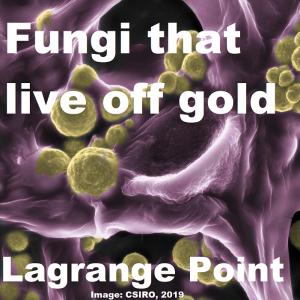
Monday Aug 12, 2019
Monday Aug 12, 2019
To celebrate National Science Week in Australia we are turning our attention to Australian research on the global scale. This week it means tales from microbiology. Stories of how life can survive or sometimes thrive in strange situations. Whether it be Fungi that eat gold, or bacteria chewing deadly gas, microbiology is always full of surprises. How do the tiniest parts of the food-web of our oceans hunt for food in the swirling of stagnant currents of the ocean? How do bacteria turn deadly gas into a food source? Is the secret to tuberculosis's resistance its ability to survive off deadly gas? How do bacteria turn carbon monoxide and hydrogen into something palatable?
References:
- Cordero, P. R., Bayly, K., Leung, P. M., Huang, C., Islam, Z. F., Schittenhelm, R. B., . . . Greening, C. (2019). Atmospheric carbon monoxide oxidation is a widespread mechanism supporting microbial survival. The ISME Journal. doi:10.1038/s41396-019-0479-8
- Islam, Z. F., Cordero, P. R., Feng, J., Chen, Y., Bay, S. K., Jirapanjawat, T., . . . Greening, C. (2018). Two Chloroflexi classes independently evolved the ability to persist on atmospheric hydrogen and carbon monoxide. The ISME Journal. doi:10.1101/457697
- Lehmann, E. (n.d.). Gold-coated fungi are the new gold diggers. Retrieved from https://www.csiro.au/en/News/News-releases/2019/Gold-coated-fungi-are-the-new-gold-diggers
- Bohu, T., Anand, R., Noble, R., Lintern, M., Kaksonen, A. H., Mei, Y., . . . Verrall, M. (2019). Evidence for fungi and gold redox interaction under Earth surface conditions. Nature Communications, 10(1). doi:10.1038/s41467-019-10006-5
- Holland, D., & University of Melbourne. (2019, August 05). The superheroes of nutrient detection living in our oceans. Retrieved from https://pursuit.unimelb.edu.au/articles/the-superheroes-of-nutrient-detection-living-in-our-oceans#
- Brumley, D. R., Carrara, F., Hein, A. M., Yawata, Y., Levin, S. A., & Stocker, R. (2019). Bacteria push the limits of chemotactic precision to navigate dynamic chemical gradients. Proceedings of the National Academy of Sciences, 116(22), 10792-10797. doi:10.1073/pnas.1816621116
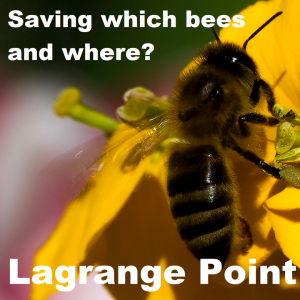
Monday Jun 24, 2019
Episode 332 - Affordable, smart and helpful prosthetics
Monday Jun 24, 2019
Monday Jun 24, 2019
Getting a prosthetic limb to feel natural and comfortable without spending a fortune is incredibly difficult. Plus the human body (and prosthetics) change over time. So how can you make a prosthetic better match it's user? We look at three stories of adaptive prosthetics and finding ways to make use of new technology to help improve lives. From building an elaborate treadmill contraption to hearing through your fingers.
When you stumble your brain goes into overdrive to keep you standing, but what exactly does it do?
Affordable and comfortably fitting prosthetic limbs are especially important for children who grow out of them quickly. How can we make them more responsive?
Hearing words clearly in a noisy environment is especially hard on those with hearing aids. But can your fingers help out?
Vanderbilt University researchers built an elaborate treadmill to trip people, with the goal of helping advance prosthetic research.
Using 3D scanning, printing and embedded sensors, researchers are making prosthetic better matched to their users.
People often say look with your eyes not your fingers, but can you use your fingers to hear as well?
Embedding sensors into 3D printed prosthetics can help adapt the design to better suit the actual wear and tear from the body.
Using an elaborate tripping contraption on a treadmill, Vanderbilt university researchers hope to stop prosthetic leg users falling over.
- Yuxin Tong, Ezgi Kucukdeger, Justin Halper, Ellen Cesewski, Elena Karakozoff, Alexander P. Haring, David McIlvain, Manjot Singh, Nikita Khandelwal, Alex Meholic, Sahil Laheri, Akshay Sharma, Blake N. Johnson. Low-cost sensor-integrated 3D-printed personalized prosthetic hands for children with amniotic band syndrome: A case study in sensing pressure distribution on an anatomical human-machine interface (AHMI) using 3D-printed conformal electrode arrays. PLOS ONE, 2019; 14 (3): e0214120 DOI: 10.1371/journal.pone.0214120
- Shane T. King, Maura E. Eveld, Andrés Martínez, Karl E. Zelik, Michael Goldfarb. A novel system for introducing precisely-controlled, unanticipated gait perturbations for the study of stumble recovery. Journal of NeuroEngineering and Rehabilitation, 2019; 16 (1) DOI: 10.1186/s12984-019-0527-7
- Katarzyna Cieśla, Tomasz Wolak, Artur Lorens, Benedetta Heimler, Henryk Skarżyński, Amir Amedi. Immediate improvement of speech-in-noise perception through multisensory stimulation via an auditory to tactile sensory substitution. Restorative Neurology and Neuroscience, 2019; 37 (2): 155 DOI: 10.3233/RNN-190898
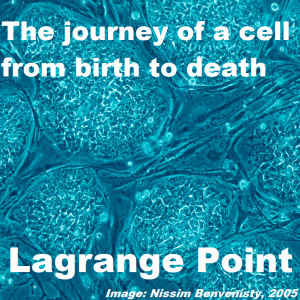
Monday Jun 10, 2019
Episode 330 - A cells journey, from birth to death
Monday Jun 10, 2019
Monday Jun 10, 2019
This week we dive into the complicated history of cells and try to figure out if you are still the same ship. How does a cell know what it wants to grow up to be? What helps it make the decision to be an optic nerve, a neuron or part of your jawbone? How old are all the cells in your body? Are they all the same age, and what does age even mean anyway? This week we dive into the complicated history of cells and try to figure out if you are still the same ship.
References:
- Rafael Arrojo e Drigo, Varda Lev-Ram, Swati Tyagi, Ranjan Ramachandra, Thomas Deerinck, Eric Bushong, Sebastien Phan, Victoria Orphan, Claude Lechene, Mark H. Ellisman, Martin W. Hetzer. Age Mosaicism across Multiple Scales in Adult Tissues. Cell Metabolism, 2019; DOI: 10.1016/j.cmet.2019.05.010
- Ruslan Soldatov, Marketa Kaucka, Maria Eleni Kastriti, Julian Petersen, Tatiana Chontorotzea, Lukas Englmaier, Natalia Akkuratova, Yunshi Yang, Martin Häring, Viacheslav Dyachuk, Christoph Bock, Matthias Farlik, Michael L. Piacentino, Franck Boismoreau, Markus M. Hilscher, Chika Yokota, Xiaoyan Qian, Mats Nilsson, Marianne E. Bronner, Laura Croci, Wen-Yu Hsiao, Jean-Francois Brunet, Gian Giacomo Consalez, Patrik Ernfors, Kaj Fried, Peter V. Kharchenko, Igor Adameyko. Spatiotemporal structure of cell fate decisions in murine neural crest. Science, 2019; 364 (6444): eaas9536 DOI: 10.1126/science.aas9536
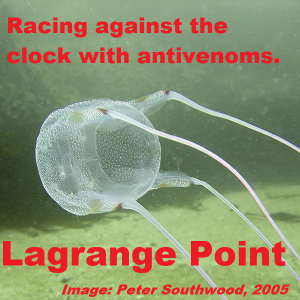
Monday May 06, 2019
Episode 325 - Racing against time, from Box Jellyfish to Alzheimers
Monday May 06, 2019
Monday May 06, 2019
Medicine is often a race against time, to diagnose, to develop and to treat. This week we're looking at new research which speeds up the detection of Alzheimers in patients and provides a chance to test out potential treatments. We also find out how University of Sydney researchers may help deliver a quick antivenom to those stung by the deadly box jellyfish. Plus ways to turn leftover bits of junk in blood plasma, into useful diagnosis tools that may help save time and lives in treatment without wasting more time on tests.
References:
- Man-Tat Lau, John Manion, Jamie B. Littleboy, Lisa Oyston, Thang M. Khuong, Qiao-Ping Wang, David T. Nguyen, Daniel Hesselson, Jamie E. Seymour, G. Gregory Neely. Molecular dissection of box jellyfish venom cytotoxicity highlights an effective venom antidote. Nature Communications, 2019; 10 (1) DOI: 10.1038/s41467-019-09681-1
- Maria D Giraldez, Ryan M Spengler, Alton Etheridge, Annika J Goicochea, Missy Tuck, Sung Won Choi, David J Galas, Muneesh Tewari. Phospho-RNA-seq: a modified small RNA-seq method that reveals circulating mRNA and lncRNA fragments as potential biomarkers in human plasma. EMBO Journal, 2019 DOI: 10.15252/embj.2019101695
- Andreas Nabers, Henning Hafermann, Jens Wiltfang, Klaus Gerwert. Aβ and tau structure-based biomarkers for a blood- and CSF-based two-step recruitment strategy to identify patients with dementia due to Alzheimer's disease. Alzheimer's & Dementia: Diagnosis, Assessment & Disease Monitoring, 2019; 11: 257 DOI: 10.1016/j.dadm.2019.01.008
Medicine is often a race against time, to diagnose, to develop and to treat. This week it's stories of scientists and doctors racing against the clock.
New research which speeds up the detection of Alzheimer's in patients and provides a chance to test out potential treatments.
We find out how University of Sydney researchers may help deliver a quick antivenom to those stung by the deadly box jellyfish.
Plus ways to turn leftover bits of junk in blood plasma, into useful diagnosis tools that may help save time and lives in treatment without wasting more time on tests.
There are whole bundles of random RNA fragments in blood plasma, but these can be used to help diagnose specific issues.
The box jellyfish is just one of the many things in Australia that is trying to kill you, but now it's slightly less deadly thanks to University of Sydney researchers.
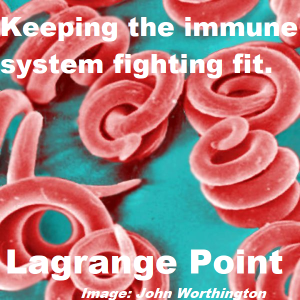
Monday Apr 22, 2019
Lagrange Point Episode 323 - Keeping your immune system in fighting shape
Monday Apr 22, 2019
Monday Apr 22, 2019
How can we keep our immune systems in fighting shape? What happens when our immune systems are responding well or are missing key genes? is there targeted gene therapies that can be used to help save lives of those most at risk from infection? How does our body hunt down and stop Listeria in it's tracks? Plus undercooked wild game or pork can lead to parasitic infections, but how does the body fight back?
References:
- E Mamcarz et al. Lentiviral gene therapy with low dose busulfan for infants with X-SCID. The New England Journal of Medicine, April 17, 2019; DOI: 10.1056/NEJMoa1815408
- Kazuhito Sai, Cameron Parsons, John S. House, Sophia Kathariou, Jun Ninomiya-Tsuji. Necroptosis mediators RIPK3 and MLKL suppress intracellular Listeria replication independently of host cell killing. The Journal of Cell Biology, 2019; jcb.201810014 DOI: 10.1083/jcb.201810014
- Nicola Steel, Aduragbemi A. Faniyi, Sayema Rahman, Stefanie Swietlik, Beata I. Czajkowska, Bethany T. Chan, Alexander Hardgrave, Anthony Steel, Tim D. Sparwasser, Mushref B. Assas, Richard K. Grencis, Mark A. Travis, John J. Worthington. TGFβ-activation by dendritic cells drives Th17 induction and intestinal contractility and augments the expulsion of the parasite Trichinella spiralis in mice. PLOS Pathogens, 2019; 15 (4): e1007657 DOI: 10.1371/journal.ppat.1007657
